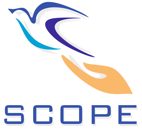Course Co-ordinator:
Prof. Reena Sonkusare
Associate Professor
EXTC Dept., S.P.I.T
Email: reena_kumbhare@spit.ac.in
Schedule Dates:
29th July 2017 (Saturday) : 4 hrs
5th August 2017 (Saturday): 6 hrs
12th August 2017 (Saturday): 4 hrs
19th August 2017 (Saturday): 6 hrs
Contact for Enrolment
Prof. Reena Sonkusare
reena_kumbhare@spit.ac.in
Prof. Pallavi Malame
pallavi@spit.ac.in
About the course
In the 1890s, there were only a few antennas in the world. These rudimentary devices were primarily a part of experiments that demonstrated the transmission of electromagnetic waves. By World War II, antennas had become so ubiquitous that their use had transformed the lives of the average person via radio and television reception. The number of antennas in the United States was on the order of one per household, representing growth rivaling the auto industry during the same period.
By the early 21st century, thanks in large part to mobile phones, the average person now carries one or more antennas on them wherever they go. This significant rate of growth is not likely to slow, as wireless communication systems become a larger part of everyday life. In addition, the strong growth in RFID devices suggests that the number of antennas in use may increase to one antenna per object in the world (product, container, pet, banana, toy, cd, etc.). This number would dwarf the number of antennas in use today. Hence, learning a little (or a large amount) about of antennas couldn’t hurt, and will contribute to one’s overall understanding of the modern world.
Major Classification of Antenna Includes:
- Yagi-Uda Antenna
- Horn antenna
- Antenna array
- Parabolic Reflectors and
- Patch Antenna : Which includes PIFA the Heart and Soul of any Mobile Device.
We are pleased to come up with the 40hrs Skill Development Training Program on “Antenna Design, Fabrication and Testing” which deals with the basic understanding, designing, simulation, Fabrication and Testing of variety of Antennas.
Pre-requisites:
Basic Physics
Industries where this course will be useful
ISRO, SAMEER, BEL, CDAC, DRDO, Rosenberger India, Keysights (Agilent) and many more small scale Industries. Remember without Antenna there cannot be communication!!
Course Outcomes
- Abiltiy to understand and design antennas according to Requirement and applications
- Ability tto design and Fabricate different antennas based on feeding type
- Ability to design Plannar Antenna
- Abiliity to troubleshoot and test antennas based on parameters evaluated.
Course Instructor:
Prof. Reena Sonkusare (Pursuing PhD)
Prof. Pallavi Malame
Course Layout
10 hours self learning, 20 hrs Hands on session( 1 session=2 hours) and 10 hours miniproject.
Session 1: CAD Simulation of Probe Feed Rectangular Patch Antenna using Constant Parameters
Session 2: CAD Simulation of Probe Feed Rectangular Patch Antenna using Variable Parameters
Session 3: CAD Simulation of Inset Feed Rectangular Patch Antenna using Constant Parameters
Session 4: CAD Simulation of Inset Feed Rectangular Patch Antenna using Variable Parameters
Session 5: IEEE Paper Implementation using CAD Simulator
Session 6: Graded Assignment I: IEEE Paper Implementation using CAD Simulator
Session 7: Graded Assignment II: IEEE Paper Implementation using CAD Simulator
Session 8: Fabrication and Testing of Antenna using VNA I
Session 9: Fabrication and Testing of Antenna using VNA II
Session 10: Session on Technical Paper Writing and Evaluation
